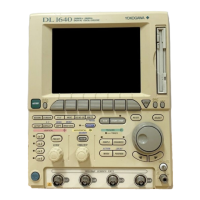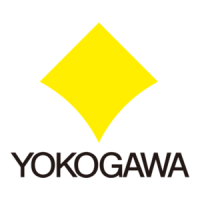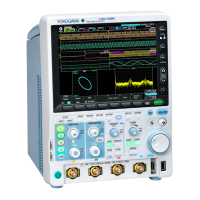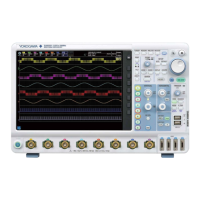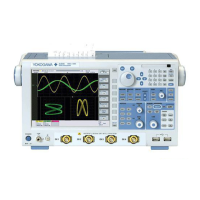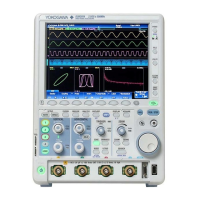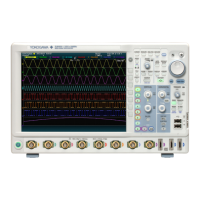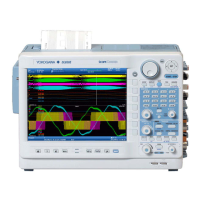
Do you have a question about the YOKOGAWA DL850E and is the answer not in the manual?
| Type | Oscilloscope |
|---|---|
| Number of Channels | Up to 16 channels |
| Sampling Rate | 1 GS/s |
| Memory Depth | Up to 2 Gpoints (with expansion) |
| Bandwidth | Up to 100 MHz |
| Resolution | 12-bit |
| Display | 10.4-inch color LCD |
| Input Modules | Various modules available for voltage, temperature |
| Interfaces | USB, LAN, GPIB |
| Power Supply | 100-240 VAC, 50/60 Hz |
| Operating Temperature | 0 to 40 °C |
| Trigger Modes | Edge, Pulse, Window |
List of standard accessories supplied with the instrument.
Information about the manuals and software provided on the CD.
Details on the various input modules available for separate purchase.
List of optional accessories available for purchase.
Details on spare parts available for purchase for the instrument.
Essential safety guidelines to prevent injury and instrument damage during operation.
Explanation of warning symbols found on the instrument and in the manual.
Detailed precautions for using the instrument, power supply, and grounding.
Information regarding the disposal of electronic equipment according to EU regulations.
Information regarding batteries included in the product and EU disposal directives.
Explanation of units (k, K) and displayed characters used in procedures.
Explanation of symbols used for warnings, cautions, and general notes.
Overview of the instrument's top, front, right, and left side panels and their parts.
Detailed explanation of the function and operation of all panel keys and knobs.
Description of the different display modes and waveform visualizations.
Overview of how modules and peripherals connect to the instrument.
Configuration of vertical scale, position, coupling, zoom, and horizontal time axis.
Explanation of trigger modes, types, sources, levels, slopes, and delays.
Settings for record length, acquisition modes, and hard disk recording.
Features for displaying waveforms, including zoom, X-Y, and snapshot.
Capabilities for waveform computation, cursor measurements, and automated parameters.
Essential safety and general precautions for instrument handling and care.
Guidelines for proper installation, including environmental conditions and placement.
Procedures and precautions for installing various input modules into the instrument.
Instructions for connecting power sources and operating the instrument's power.
Procedures and precautions for connecting various probes and measurement leads.
Steps to perform phase correction on probes for accurate measurements.
How to use the instrument's keys, soft keys, and jog shuttle for navigation and settings.
Methods for entering numerical values and character strings using the keypad or keyboard.
Connecting and using USB keyboards and mice for instrument operation.
How to use the auto setup feature to optimize instrument settings for input signals.
Instructions for performing instrument calibration for accurate measurements.
How to use the external trigger input for synchronizing measurements.
Explanation of the trigger output terminal and its various signal formats.
Using I/O terminals for GO/NO-GO determination and external control.
Detailed specifications for the instrument's signal input capabilities and modules.
Technical specifications for trigger modes, types, and conditions.
Overview of instrument features including waveform acquisition, display, and analysis.
Overall instrument specifications including operating conditions, power, and dimensions.
Detailed specifications for individual input modules, covering various types.
Lists default operational settings for various input modules (CH1-CH16).
Default operational settings for CAN, LIN, Logic, and SENT modules.
Comprehensive list of USB keyboard shortcuts and their corresponding instrument functions.
Diagram illustrating how signals travel through the instrument's internal components.
Visual representation of the internal structure of various plug-in modules.
Detailed specifications for various measurement modes like Frequency, RPMs, and Period.
